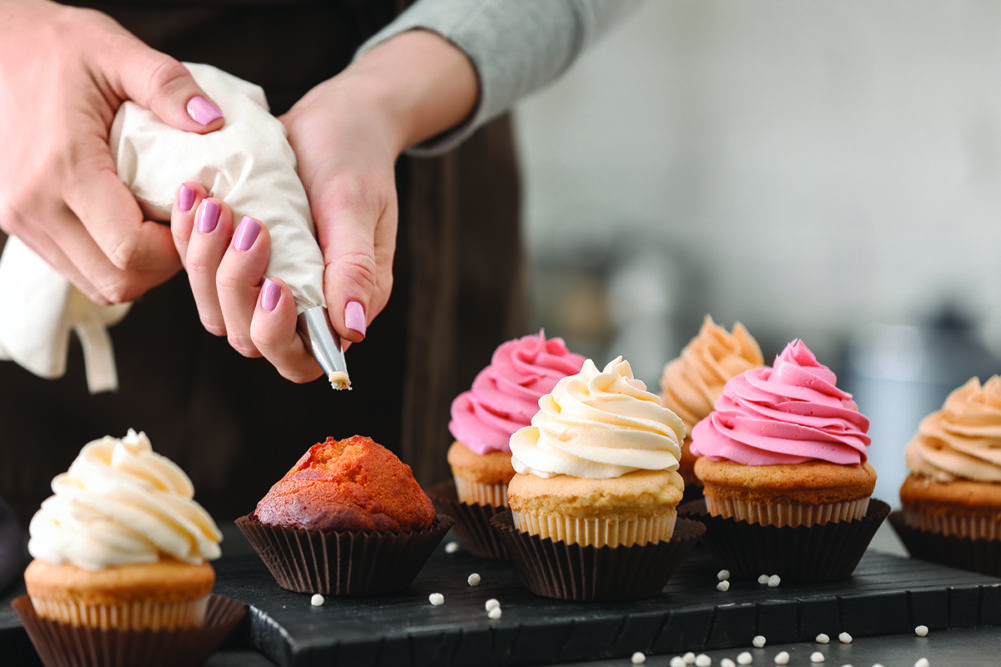Rouxbe, a leading online culinary school, recently put on a cake baking and decorating arts course that featured chefs Jacquy Pfeiffer, founder of The French Pastry School, Scott Samuel, vice president of culinary at Rouxbe, and chef Alissa Wallers, who discussed piping equipment and shared common mistakes made when learning to pipe.
Pfeiffer reminds people that none of us were born great pipers. It comes with practice. That is really the key to become better.
“It is kind of like playing the violin. It is going to become second nature. Then it will stay with you forever.”
As for specific ideas, Wallers recommends using parchment cones when you decorate with chocolate and buttercream.
“It is important to cut it, so the tip is flush with the bag,” she said. “One of the No. 1 problems I see, people tend to overfill the bag. You definitely don’t want to fill it more than halfway up.”
Use the seam side to start to seal it nice and tightly. Keep in mind that with larger companies, like Wilton, tip numbers are relatively equal. Others are not the same. Plastic tips sometimes don’t have the sharpest edge, and they can also get warn out a little easier, Wallers added. “We always use metal tips.”
Couplers are great tools. They go in the pastry bag before the tip, and you can interchange any tip. “Couplers are probably one of my No. 1 pieces of equipment in cake decorating. It screws on. It is important the plastic of the piping bag is over the threading. I only buy one brand of coupler because they are not made the same. They can only be used on plastic or reusable piping bags.”
Remember that if you are using a larger bag, don’t fill it up more. Your hand is not strong enough to push out the right amount of buttercream, as your hand starts shifting. If you are doing a lot of piping, it is important not to overextend the muscles in your hand.
“We definitely recommend practice boards,” Wallers recommended. “It is better when you are practicing is to go slow. The speed comes after you have trained your hands.”
You don’t have always have to practice with royal icing or buttercream, Pfeiffer explained. You can used whipped butter, instant mashed potatoes, even toothpaste.
And here is an important trick to prevent accidents: Start by making small plaque out of fondant. Write on that. Once it is nice, put it on the cake.
Pfeiffer points out there are many ways to make a cone. The end of your cone needs to have a nice even opening. It has to be a sturdy parchment cone with quite a bit of silicon. Don’t use cheap parchment paper that is very flimsy.
People very often put too much in the bag, he added, recommending that you only need a little to pipe. Always keep your finger on the seal side. Each tip will produce another design.
“If you really take care of your tips, you will have them for life,” he said. “At the end of the day, get your tips back where they belong. Never put a piping bag with a tip near the dish area.”
There are round tips, star tips and French tips, which are much finer. There are also different tips of icing bags, including larger pastry bags for meringues and cookies.
“From years of teaching, we see people pipe with one hand. Use both hands – and use your left hand as your guide,” Pfeiffer said. “If you pipe and your hand really hurts, you are doing something wrong. You may be holding your bag wrong. Don’t bend over too far. At the end of the day, you have to be comfortable.”




